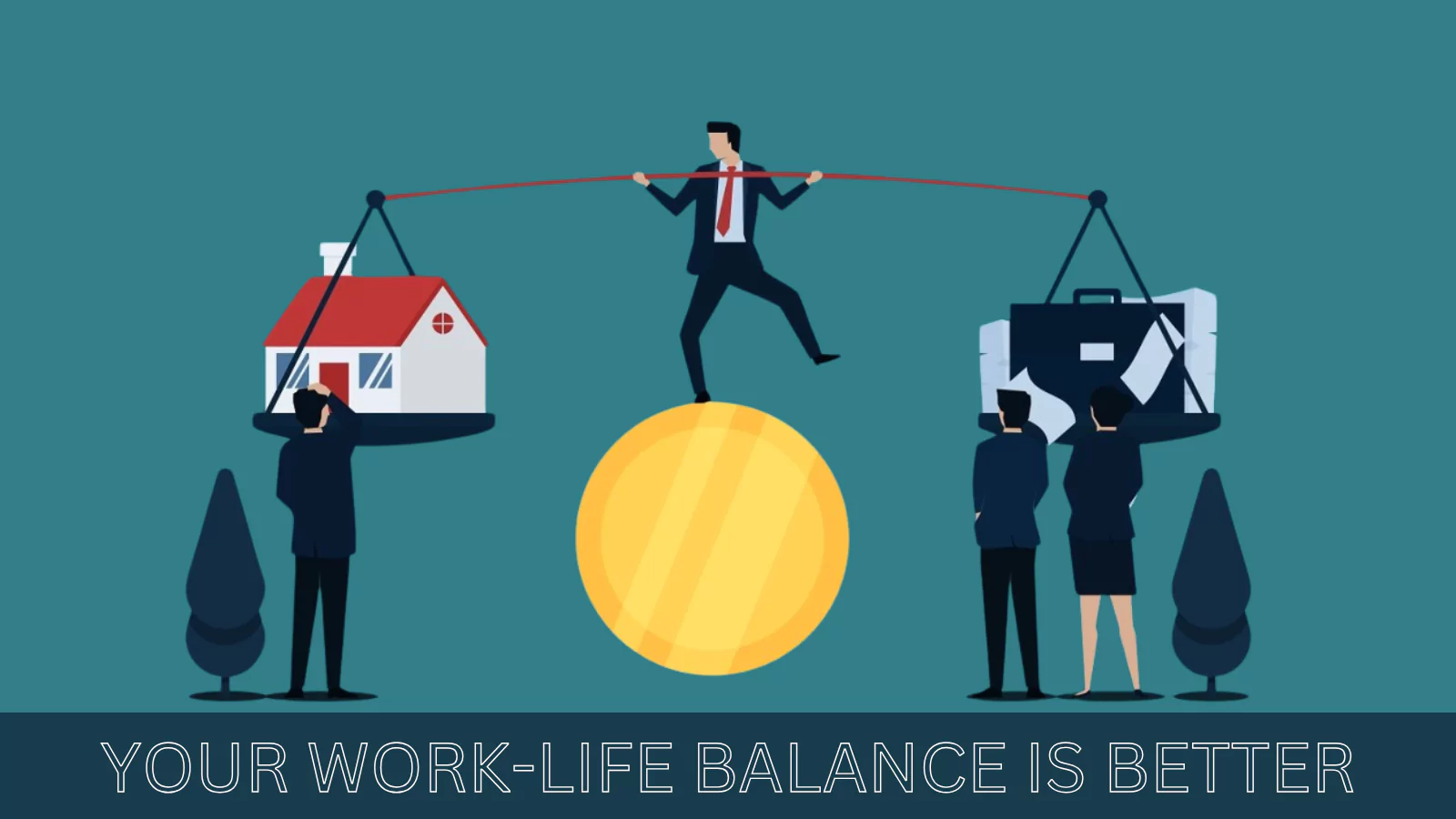Over the past decade, there has been growing support for the idea that tailoring workday schedules to individual needs is the way forward. They argue that the nature of our work is evolving, and many knowledge workers, especially, no longer see the value in an 8-hour workday, a structure created for factory workers.
While the concept of 3 to 4-hour workdays may appeal to some, many employees find it challenging to adapt to such unconventional structures. For a substantial portion of the workforce, the traditional 9-to-5 schedule remains both practical and indispensable. Implementing a well-organized workday schedule can significantly enhance productivity, ensuring a stable framework that benefits both employees and the organization.
In this blog, we’re here to shed a positive light on the 9-to-5, explore why it works so well for some people (myself included), and provide tips on how to structure an 8-hour workday schedule that gives you as much freedom and balance as any flexible routine. Whether you thrive with consistency or need the balance a traditional schedule offers, crafting the right workday schedule is key to success.
In a hurry? Listen to the blog instead!
The Rise Of Flexible Work Hours: Why Employees Love It
As an employer, it’s clear why flexible work hours have gained traction—they offer distinct benefits that appeal to a diverse workforce. Flexible schedules can help employees align their work hours with personal obligations and natural productivity peaks. They also promote a sense of autonomy, making individuals feel more in control of their time.
That said, it’s equally important to recognize the value of a structured 9-to-5 schedule. For many, a traditional workday provides much-needed stability and helps maintain clear boundaries between professional and personal life. This structure can especially benefit those who thrive with external motivation and consistent routines.
From an organizational standpoint, the key lies in balancing flexibility with structure. Offering a framework that accommodates different working styles while ensuring productivity and collaboration is essential for a successful workplace.
Rethinking the 9-to-5: A Case for Traditional Work Hours
Of course, we’re not here to argue against the flexibility that some people thrive on. For many, the traditional 9-to-5 work model simply doesn’t fit, and that’s completely okay. However, for those who find that the structured routine of a “9 to 5” works better for them, we’re here to make the case for why it can be just as effective.
Here are the key benefits of following a classic 8-hour workday schedule:
Focus Is Easier To Maintain
For many people, working in fragmented blocks with breaks or errands in between can be disruptive to their overall workday schedule. Switching from one task to another—especially when it involves different types of focus—can waste time and break concentration. This constant task-switching can significantly slow down productivity and may result in unfinished work.
With a traditional 8-hour workday, you have the advantage of staying focused for a longer period, allowing you to complete tasks without the interruptions that come with managing multiple activities at once. The structure of a set schedule enables better focus and efficiency.
How an 8-hour workday helps with context switching
An 8-hour workday provides a larger block of uninterrupted time to concentrate on your tasks, reducing the need for constant shifts in focus. This structure helps you stay in “work mode” throughout the day, minimizing the effort needed to refocus when switching between tasks. Unlike flexible schedules, which often involve frequent distractions, the traditional 8-hour workday allows you to maintain consistency and productivity. This stability makes context switching less frequent, enabling you to be more efficient and get through your workday without constantly adjusting to new tasks.
Your Boundaries Are Clearer
A traditional workday offers clear boundaries, especially in an office setting. As your 8-hour workday comes to an end, it’s easy to shift from “work mode” to “personal life” mode. For those who struggle to leave work on time, a set schedule provides structure and signals when the workday is over. Once the day ends, the time is yours for relaxation or personal activities—unless overtime is required. This clarity is one of the main benefits of a structured workday schedule.
In contrast, flexible workday schedules blur these boundaries. Tasks are often spread throughout the day, depending on energy levels. While this can enhance productivity, it makes it difficult to fully disconnect from work, as there’s no clear end to the workday. The lines between work and personal time can become less defined, making it harder to truly relax.
People Know Exactly When To Reach You
With a flexible workday schedule, your availability can vary from day to day, making it difficult for others to know when you’re free. For example, you might work for two hours in the morning one day, then another hour in the afternoon, and an hour in the evening the next. This unpredictable pattern requires constant updates to inform friends, family, or clients about your availability, which can be time-consuming and confusing.
In contrast, an 8-hour workday provides a clear, fixed schedule, making it easier for others to know when you’re working and when you’re available. You can simply set your status to “Away,” turn off phone notifications, or inform others that you’re off-limits during your work hours. This consistency eliminates confusion and minimizes interruptions, helping you stay focused and productive throughout your workday.
There Is Less Overtime
Context-switching can lead to significant time loss. It typically takes around 20 minutes to fully get into the zone for a specific task, and the more often we switch between tasks, the longer it takes to regain focus. These lost minutes add up throughout the day and can lead to falling behind on work.
With a more flexible schedule, it’s easy to let tasks stretch beyond normal hours because there’s no clear boundary between work and personal time. Over time, this lack of structure can result in overtime becoming the norm, with work spilling into the late hours of the night.
However, a traditional 8-hour workday helps keep overtime in check by setting clear start and end times, encouraging more efficient work, and reducing the temptation to extend your day beyond reasonable hours.
Your Work-Life Balance Is Better
Work-life balance depends on several factors, but one of the most important is maintaining clear boundaries between work and personal time. With a traditional 8-hour workday, these boundaries are more easily defined. Once your workday ends, you know it’s time to shift to personal activities, and you don’t have to remain mentally alert for the next work block. This structure helps ensure that personal tasks, like errands or family time, don’t interfere with your designated work hours.
On the other hand, with a flexible workday schedule, the lines between work and personal time can blur. Tasks are often spread throughout the day, meaning work can spill over into evenings or weekends, which are usually reserved for relaxation or personal activities. This lack of separation makes it harder to fully disconnect and recharge.
With an 8-hour workday, you have a clear structure that allows you to maintain both productivity and personal time. By sticking to fixed work hours, you can avoid overworking and enjoy a healthier balance between your professional and personal life.
How To Make A Functional 8-Hour Workday Schedule?
Creating a productive 8-hour workday requires a strategic approach to time management. Here are the steps to optimize your 8-hour Workday schedule:
Find Your Optimal Work Hours
To make the most of your 8-hour workday, start by identifying when you are most focused and energized. We all have different natural energy patterns, so it’s important to tailor your workday schedule accordingly. For example, I perform best in the morning, so I schedule my 8-hour workday from 7 AM to 3 PM.
However, others may find that they work better in the afternoon or evening after taking time for rest or personal tasks. You can maximize productivity throughout the day by aligning your work hours with your peak energy times.
Identify Your Time Wasters And Address Them
Distractions can significantly impact your ability to stick to a productive 8-hour workday schedule. Identifying what causes distractions is the first step toward managing them. Are you interrupted by phone calls, chat messages, or social media notifications? Do you find yourself procrastinating with non-work-related apps like YouTube or Instagram?
Once you’ve identified the sources of distractions, think about how they affect your focus. How long does each distraction last, and how much time does it take to get back on track? Once you have a clearer picture of your time wasters, you can take action. Consider using apps to block distracting websites or set specific periods for personal tasks. By minimizing these interruptions, you can stay on task and make the most of your 8-hour workday.
Keep A Time Card Or A Timesheet
A key element of maintaining a healthy 8-hour workday is accountability. To fully benefit from your 8-hour workday schedule, you need to track your start and end times, ensuring you stick to a clear work-life boundary. This can be done by keeping either a time card or a timesheet.
-
Keeping a time card
A time card is a simple way to track your work hours. You simply log the start time of your workday and record when it ends. This helps you stay mindful of your working hours and ensures you’re not overextending your day.
While a time card tracks the basic start and end times, the rest of your schedule can be organized using a calendar app, to-do list, or project management tool. The time card serves as a quick reference to monitor how much time you’ve worked, including any overtime, so you can keep track of your weekly hours.
For added convenience, many platforms have embedded calculators that allow you to track your work hours directly in the browser, making the process even easier. This method eliminates the need for additional software downloads and streamlines your time-tracking efforts, helping you maintain a structured and accountable 8-hour workday.
-
Keeping a timesheet
A timesheet is an effective way to manage your 8-hour workday. Digital timesheets are convenient, offering features like autofill and templates to make tracking your time simple and efficient.
You can track time by project, which works well for tasks that span multiple days or weeks. This approach allows you to focus on your workload without being tied to strict hourly tracking, ensuring your day stays balanced.
Integrating a tool like EmpMonitor adds another layer of organization. It helps you track time and tasks, syncing with your calendar for a clear overview of your day. Color-coded blocks allow you to visualize your schedule, making it easy to stay on track.\
If you prefer traditional methods, physical timesheets are also an option. Available in daily, weekly, or hourly formats, they allow you to keep track of your time manually. Whether digital or physical, using a timesheet—especially with tools like EmpMonitor—helps ensure accountability and maximizes productivity throughout your 8-hour workday.
EmpMonitor: A Powerful Tool For Managing Your Workday Schedule
EmpMonitor is a productivity tool designed to help you stay on track with your 8-hour workday. Its features make managing your time easier, boosting accountability, and enhancing your work-life balance.
Time Tracking Tool
EmpMonitor has time management software that allows you to track the exact hours worked, giving you insight into how much time you spend on different tasks. By tracking work hours in real-time, you can ensure that you’re sticking to your 8-hour schedule and maintaining productivity throughout the day.
Task Management
The tool helps you break your day into tasks and projects, offering a clear overview of your workload. You can prioritize tasks, set deadlines, and track progress, making it easier to structure your 8-hour workday.
Idle Time Detection
EmpMonitor identifies periods of inactivity, helping you stay accountable and avoid procrastination. By minimizing distractions, it ensures that your 8-hour workday is as productive as possible.
Real-Time Monitoring
With real-time monitoring, EmpMonitor allows you to track progress and time spent on various tasks instantly. This helps you stay focused and adjust your workflow as needed to stay within your 8-hour workday.
Reporting And Insights
EmpMonitor generates detailed reports, giving you insights into your work habits and areas for improvement. By analyzing this data, you can make more informed decisions about how to optimize your 8-hour workday schedule and boost productivity.
By using EmpMonitor, you can manage your time more effectively, track your progress, and achieve a productive, balanced 8-hour workday.
Make A Habit Of Tracking Your Time
For an 8-hour workday to be both productive and balanced, consistent time tracking is crucial. By keeping track of when you get distracted, your most productive hours, and how you use breaks, you gather valuable data that can help you optimize your work habits.
When you review your time logs objectively—without judgment—you’ll begin to notice patterns in your behavior. You might discover that certain times of the day are better for focused work, while other times are when distractions like social media creep in. You’ll also learn when taking breaks boosts your productivity.
Approach time tracking like a scientist studying their system. By analyzing your data, you can identify what works best for you and fine-tune your routine to maximize your efficiency throughout the 8-hour workday. It’s about understanding your habits so you can work smarter, not harder.
Read More
How To Track Employee Work Hour Log: 5 Ways & Tips
Shift Schedules: How To Create, Types, And Advantages
Enjoy Breaks Unapologetically

A practical approach is to take a short, 5-10-minute break every hour. Use this time to stretch, grab a snack, or just step away from your desk for a moment. These mini-breaks allow your brain to recharge and prevent burnout, helping you stay focused when it’s time to get back to work.
Finding the right balance is key. Experiment with different intervals to see what keeps you productive and refreshed. The goal is to create a workday schedule that allows for necessary breaks, while still respecting the structure of your 8-hour workday.
Conclusion
An 8-hour workday, when managed effectively, can be an excellent way to maintain productivity, achieve a healthy work-life balance, and stay focused throughout the day. By setting clear boundaries, minimizing distractions, and incorporating regular breaks, you can craft a workday schedule that suits your needs and helps you work more efficiently. Whether you work remotely or in an office, tracking your time and sticking to a structured routine enables you to accomplish your tasks while also protecting your time.
The key to success is tailoring your workday schedule to fit your energy levels and work preferences. With the right planning and consistency, an 8-hour workday can feel rewarding, not draining, helping you stay productive and enjoy a balanced life.
FAQs
- How can I improve my workday scheduling for better efficiency?
To improve your workday scheduling, start by identifying your most productive hours and blocking out time for focused work. Use tools like a workday schedule app to structure your day and ensure you have time for essential tasks, breaks, and personal activities. - What is the role of time management software in optimizing my workday?
Time management software helps you prioritize tasks, set reminders, and allocate time more effectively. By using these tools, you can stay organized, minimize distractions, and maintain a balanced workday. - Can a time-tracking tool help me stick to my 8-hour workday?
Yes, a time-tracking tool can help you track how much time you spend on various tasks, allowing you to identify where time is being wasted. This insight can help you improve your workday schedule and ensure that you stay within your 8-hour work limit. - Is it necessary to use a workday schedule app if I work remotely?
While not mandatory, a workday schedule app can be especially helpful for remote workers by providing structure and ensuring that work hours and personal time remain balanced. It helps you set clear boundaries between work and leisure, which is essential for productivity. - How can I incorporate breaks effectively into my workday schedule?
To avoid burnout, make sure to incorporate regular breaks into your workday schedule. Use a time-tracking tool to remind yourself to take breaks every 60-90 minutes. Scheduling these breaks helps maintain focus, boost productivity, and recharge your energy throughout the day.





















